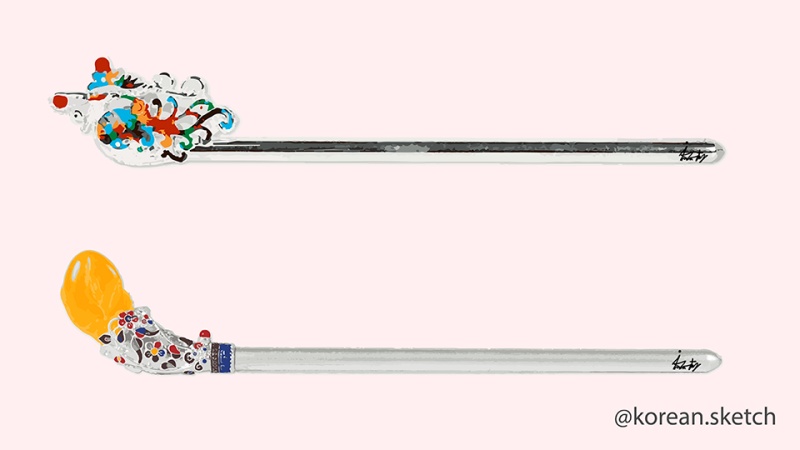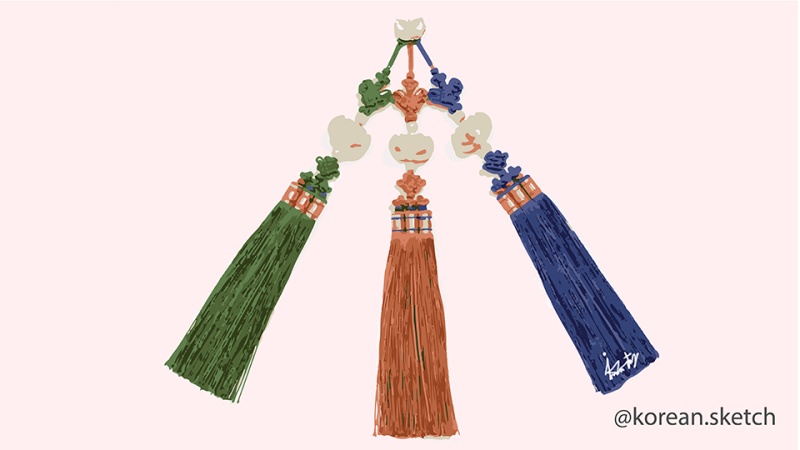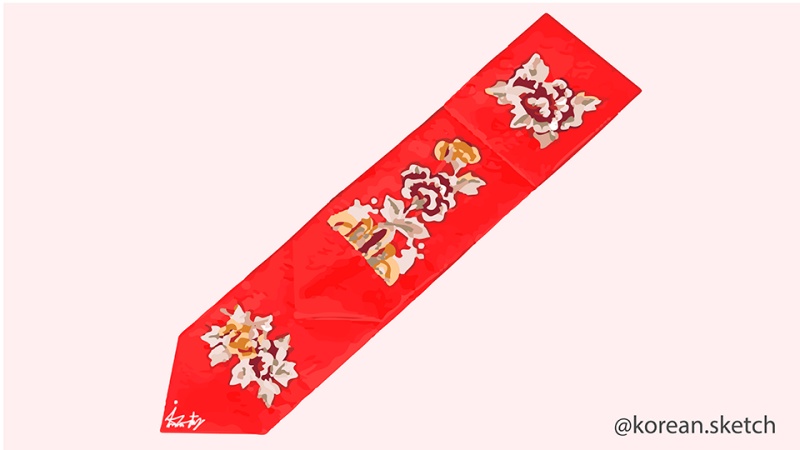- 한국어
- English
- 日本語
- 中文
- العربية
- Español
- Français
- Deutsch
- Pусский
- Tiếng Việt
- Indonesian
By Honorary Reporter Minnath Azeez from Sri Lanka
Photo = Minnath Azeez
The royal court of the Joseon Dynasty wore a variety of accessories to style their outfits based on gender and sometimes age. Among the accessories worn by Koreans in the past, several have survived to the present day.
Binyeo
This traditional hairpin is used to keep a lower bun in place and was usually worn by married women; it was also an ornamental piece used to style hair. The accessory was matched based on outfit, season, occasion and the wearer's age. The shape of the jamdu (pin head) signified auspicious symbols like longevity, health and wealth.
The royals wore jamdu shaped like dragons and phoenixes, while widows wore a wooden binyeo. The material used to make these pins varied depending on the user and the upper class wore binyeo made of gold, silver and jade. Joseon-era Koreans believed that each hairpin carried a spell that captured the soul of the wearer. So the accessory was considered a mirror of the woman's inner self, and taking it off meant losing one's fidelity and dignity.
Binyeo was also worn by men. Men also gifted these pins to their brides as a symbol of love, and they offered a way for lovers to meet.

This accessory hangs on the chima or jeogori goreum, or the blouse or jacket string of Hanbok. This decorative pendant is made by using long silk threads attached to a jewel with long tassels hanging from it.
A norigae was a good luck charm said to bring wealth, eternal youth and a son. Its designs were inspired by nature and everyday life and each catered to an occasion and season.
The three parts of a norigae are paemul (main ornament), ggeun (thread) and sul (tassel). The knots are matched based on the main ornament, which was made of gold, silver or other precious stones, used to create the norigae. A heavier ornament meant more elaborate and small knots, while a smaller one was held together by bigger knots.

The name of this hair accessory originated from the word danggi, which means pulling one's hair. The design varied based on age, status and purpose. Married women sectioned their hair into two plaits and secured them at the top of their heads with a daenggi, while single women used it at the end of their single braided hair.
Unlike the binyeo and other hair accessories made from metal and stones, a daenggi is made of fabric. The daenggi of princesses were designed with gold and silver patterns, while others featured prints of animals, embroidered flowers and other characters. It was also worn by men who used it to tie their long hair.

The gat is a hat worn by men from the Joseon period that started off as a veil shielding the face from the sun, rain and wind. By incorporating a variety of materials, fabrics and forms, however, it evolved into a heungnip (black gat) worn by Joseon ministers or those who passed the national civil service test.
The hat's cylindrical shape with a wide brim made from bamboo protected the hair. The gat also represented social status, with a white one worn at funerals and military officers sporting a red one. Commoners wore paeraengyi, a gat made from split bamboo.
The gat was also styled with gat-ggeun (straps) made of jade, gold, silver and fabric that hung from the corners of the hat.

Sangtugwan
This small cap worn by men on top of their topknots is made of metal, leather, wood, paper, animal bones and horns painted black. Its three parts are te, which surrounds the topknot, dari, which is attached to the insides of the front and back of the te, and jamdo, which fastens the sangtugwan to the head. A binyeo called donggot is also used to keep the hair in place.
Men wore this accessory because showing a topknot was considered improper in neo-Confucian society. And wearing this along with a gat hid the topknot.

This hair accessory used to decorate the lower bun is made of gold or silver, and the long tails attached on each side are used to style the accessory into the lower bun. Its designs include the forms of a dragon, peacock, phoenix, frog, birds and flowers.
Members of the royal court wore this accessory regularly, and its designs also differentiated the wearer. A cheopji featuring a dragon was worn by the queen; ones with a phoenix by the prince's wife or concubines; those with frogs by the wives of the highest-ranking officials; those with silver frogs by court ladies; and those black frogs by an upper-class woman at the funeral of her husband or parents. Commoners only wore this accessory when wearing ceremonial attire.

enny0611@korea.kr
*This article is written by a Korea.net Honorary Reporter. Our group of Honorary Reporters are from all around the world, and they share with Korea.net their love and passion for all things Korean.